- Home
- Bobby Akart
Electromagnetic Pulse Page 2
Electromagnetic Pulse Read online
Page 2
It is doubtful that the transportation system will be intact. Damage to the transportation system will hinder mass evacuation efforts. First responders will be severely impaired due to police and fire stations throughout the impacted region. Public shelters will be damaged and unusable after the earthquake.
The scenario described for a New Madrid Zone earthquake can be applied to other catastrophic disaster events. Strikes by bjects, NEOs, such as asteroids, can be extinction-level events. Likewise, a massive eruption of the Yellowstone SuperVolcano could result in climate change that would alter the entire food production system of the Northern Hemisphere.
What if?
The Deadly Threat of a Coronal Mass Ejection – Solar Flare
A powerful electromagnetic pulse, whether resulting from a nuclear-delivered EMP or a massive solar storm, could collapse the power grid and the critical infrastructure of our nation.
What are solar storms?
Every minute, enormous eruptions of magnetically-charged plasma are emitted from the sun's roiling interior, exploding outward into space. Known as coronal mass ejections, or CME, these moderate solar storms occur fairly regularly and harmlessly, sometimes causing spectacular auroras that illuminate the sky over the North and South poles. But even typically benign solar storms generate energy many times more powerful than our planet’s combined nuclear arsenals.
Is the threat real? Renowned American astronomer, Phil Plait, who is a self-proclaimed skeptic, is known as The Bad Astronomer because of his work in debunking common misunderstandings about space events. "People sometimes ask me if anything in astronomy worries me," says Plait, when asked about the threat of a deadly CME. "Something like this is near the top of the list."
There is good reason to be concerned. A National Academy of Sciences study found there is a twelve percent chance that a monster solar storm will strike Earth within the next decade. A solar event of that magnitude could cause two trillion dollars’ worth of damage in the first year of recovery alone—twenty-times the cost of Hurricane Katrina.
But, what about the human cost? Studies frequently cite economic loss. How would the destruction of the power grid and other critical infrastructure; like the internet, banking, and government be affected? Has such a storm ever hit Earth?
Yes, several times. Imagine our way of life without power for weeks on end, as a result of a massive solar flare striking the Earth. It happened in 1859, in what is commonly referred to as the Carrington Event.
On Sept. 1, 1859, British astronomer Richard Carrington noticed a brilliant solar flare over England. In the days that followed, a succession of coronal mass ejections struck Earth head-on. Auroras illuminated the night sky from Africa to Hawaii. "The light appeared to cover the whole firmament," one Baltimore newspaper reported. "It had an indescribable softness and delicacy." The effects were more than aesthetic. EMPs from the storm caused telegraph systems — known as the Victorian internet — to fail throughout North America and Europe; in some cases, lines sparked and offices caught fire. Otherwise, the damage was minimal.
Nonetheless, for telegraph operators in the Americas and Europe, the experience caused chaos. Many found that their lines were just unusable—they could neither send nor receive messages. Others were able to operate even with their power supplies turned off, using only the current in the air from the solar storm.
From historical reports, one telegraph operator said, "The line was in perfect order, and skilled operators worked incessantly from eight o'clock last evening until one o’clock this morning to transmit, in an intelligible form, four hundred words of the report per steamer Indian for the Associated Press."
Other operators experienced physical danger. Washington, D.C. operator, Frank Royce said, "I received a very severe electric shock, which stunned me for an instant. An old man who was sitting facing me, and but a few feet distant, said that he saw a spark of fire jump from my forehead to the sounder."
At the time, the telegraph was a new technology and never experienced technical difficulties of this type. But the story offers an important warning for modern society. The Carrington Event provides evidence of the fragility of electrical infrastructure. Scientific American reported in October of 1859: “The electromagnetic basis of the various phenomena was identified relatively quickly. A connection between the northern lights and forces of electricity and magnetism is now fully established."
This event was long before humanity became utterly reliant on electronics — as it was when history repeated itself 153 years later.
In 1989, a far smaller solar flare sent a pulse of radiation that left six million people in Quebec without power for up to nine hours. Much more alarming, was a solar super storm that barely missed Earth in July 2012. Astronomers say the sun spewed out a huge magnetic cloud that tracked straight through our planet’s orbit. Fortunately, for civilization, the Earth was elsewhere in its path around the sun at the time but had the storm roared through nine days earlier, a worst-case scenario would have occurred. Satellites involved in crucial global communications (including GPS) would have been ruined, large electrical transformers would have been destroyed, and ATMs would have stopped functioning. The internet would have been disabled on a massive scale. Most people wouldn't have been able to flush toilets, which rely on electric pumps.
Three years later, "we would still be picking up the pieces," says astronomer Daniel Baker. "The July 2012 storm was, in all respects, at least as strong as the Carrington Event. The only difference is, it missed."
In a word—TEOTWAWKI—The End Of The World As We Know It.
Over the last one hundred and fifty years, the world’s critical infrastructure has become a more integral part of daily life. In the nineteenth century, telegraphs composed a comparatively small and relatively non-essential part of everyday life. Their successors today—including the electrical grid and much of the telecommunications network—are essential to modern life.
Is the current system any more protected from catastrophic interference than the telegraph of the nineteenth century? Can the power grid handle a terrorist attack, or severe weather events, or a solar storm?
There has never been a real test to prove it, but there is a robust debate about the vulnerability of the power grid. The most dangerous and costly possibilities for major catastrophes, the collapse of the nation’s critical infrastructure, might visit the United States from any number of methods.
One scenario is a repeat of the solar storm as big as the 1859 Carrington Event. A solar event of this magnitude hasn't struck the earth since, although there have been smaller ones. As a result of the Quebec blackout in 1989, there were complications across the interconnected grid and a large transformer in New Jersey permanently failed.
In 2003, residents of the northeastern United States experienced a grid-down scenario. It doesn't take an unprecedented solar flare to knock out power. The combination of a few trees touching power lines, and a few power companies asleep at the wheel, plunged a section of the nation into darkness. The darkness can spread. As the difficulties at Ohio-based FirstEnergy grew and eventually cascaded over the grid, electrical service from Detroit to New York City was lost. The 2003 event was a comparatively minor episode, compared to what might have happened. Most customers had their power back within a couple of days and the transformers were relatively unaffected.
Compare that event with the incident in Auckland, New Zealand. Cables supplying power to the downtown business district failed in 1998. The center of the city went dark. Companies were forced to shutter or relocate their operations outside of the affected area. The local Auckland utility had to adopt drastic measures to move in temporary generators. They even enlisted the assistance of the world's largest cargo plane—owned by rock band U2, to transport massive generators into the area. It took five weeks for the power grid to be fully restored.
There are contrarians. Jeff Dagle, an electrical engineer at the Pacific Northwest National Laboratory, who served on the N
ortheast Blackout Investigation Task Force argued, “one lesson of the 2003 blackout is that the power grid is more resilient than you might think.”
The task force investigators pinpointed four separate root causes for the collapse, and human error played a significant role. "It took an hour for it to collapse with no one managing it," Dagle said. "They would have been just as effective if they had just gone home for the day. That to me just underscores how remarkably stable things are."
As awareness was raised by Congress, the National Academies of Science produced a report detailing the risk of a significant solar event. The 2008 NAS report paints a dire picture, based on a study conducted for FEMA and Electromagnetic Pulse Commission created by Congress.
While severe solar storms do not occur that often, they have the potential for long-term catastrophic impacts to the nation’s power grid. Impacts would be felt on interdependent infrastructures. For example, the potable water distribution will be affected immediately. Pumps and purification facilities rely on electricity. The nation’s food supply will be disrupted, and most perishable foods will spoil and be lost within twenty-four hours. There will be immediate or eventual loss of heating/air conditioning, sewage disposal, phone service, transportation, fuel resupply, and many of the necessities that we take for granted.
According to the EMP Commission, the effects would be felt for years, and its economic costs could add up to trillions of dollars—dwarfing the cost of Hurricane Katrina. More importantly, the commission’s findings stated a potential loss of life that was staggering. Within one year, according to their conclusions, ninety percent of Americans would die.
But some skeptics say it's the opposite. Jon Wellinghoff, who served as Chairman of the Federal Energy Regulatory Commission—commonly known as FERC, from 2009 to 2013, has sounded the alarm about the danger of an attack on the system. The heightened awareness came as a result of an April 2013 incident in Silicon Valley, California, in which a group of attackers conducted a coordinated assault on an electrical substation, knocking out twenty-seven transformers. FERC points to the fact that the U.S. power grid is broken into three big sections known as interconnections. There is one each for the Eastern United States, the Western United States, and—out on its own—Texas. In fact, the East and West interconnections also include much of Canada and parts of Mexico.
In a 2013 report, FERC concluded that if a limited number of substations in each of those interconnections were disabled, utilities would not be able to bring the interconnections back up again for an indeterminate amount of time. FERC’s conclusion isn't classified information. This information has been in government reports and widely disseminated on the internet for years.
FERC also noted that it could take far longer to return the electrical grid to full functionality than it did in 2003. Wellinghoff said, "If you destroy the transformers—all it takes is one high-caliber bullet through a transformer case, and it's gone, you have to replace it. If there aren't spares on hand—and in the event of a coordinated attack on multiple substations, any inventory could be exhausted—it takes months to build new ones.”
"Once your electricity is out, your gasoline is out, because you can't pump the gas anymore. All your transportations out, all of your financial transactions are out, of course because there are no electronics," Wellinghoff also stated.
FERC’s proposed solution was to break the system into a series of microgrids. In the event of a cascading failure, smaller portions of the country could isolate themselves from the collapse of the grid. There is a precedent for this. Princeton University has an independent power grid. When a large part of the critical infrastructure collapsed during Superstorm Sandy, the Princeton campus became a place of refuge for residents and a command center for first responders.
These doomsday scenarios may be beside the point because the electrical grid is already subject to a series of dangerous stresses from natural disasters. Sandy showed that the assumptions used to build many parts of the electrical infrastructure were wrong. The storm surge overwhelmed the substations, causing them to flood, and subsequently fail. Experts determined that significant portions of the grid might need to be moved to higher ground.
Even away from the coasts, extreme weather can threaten the system in unexpected ways. Some systems use gas insulation, but if the temperature drops low enough, the gas composition changes and the insulation fails. Power plants in warmer places like Texas aren't well-prepared for extreme cold, meaning power-generating plants could fail when the population needs them the most to provide power for heat. As utilities rely more heavily on natural gas to generate power, there's a danger of demand exceeding supply. A likely scenario is a blizzard, in which everyone cranks up their propane or natural gas-powered heating systems. As the system becomes overwhelmed, the gas company can't provide to everyone. Power providers don't necessarily have the first right of refusal from their sources, so they could lose their supply and be forced to power down in the middle of a winter storm.
Summer doesn't necessarily offer any respite. Even prolonged droughts can play a role. As consumers turn up their air conditioners, requests for more power will increase. There can be a ratcheting effect. If there are several days of consistently high temperatures, buildings will never cool completely. The demand from local utilities will peak higher and higher each day. Power plants rely upon groundwater to cool their systems. They will struggle to maintain cooling as the water itself heats up. Droughts can diminish the power from hydroelectric plants, especially in the western United States.
If such extreme weather continues to be the norm, the chaos that was unleashed on the grid by Sandy may have been a preview of the kinds of disruptions to the grid, that might become commonplace. As the New York Herald argued in 1859, referring to the Carrington event, "Phenomena are not supposed to have any reference to things past—only to things to come. Therefore, the aurora borealis must be connected with something in the future—war, or pestilence, or famine." Although the impact of solar storms was not fully understood at the time, the prediction of catastrophe remains valid.
What protective measures are possible?
The Obama administration has taken steps to replace some of the aging satellites that monitor space weather, and extra-high-voltage transformers that are vulnerable to solar storms. The administration’s new plan also calls for scientists to establish benchmarks for weather events in space, incorporating something similar to the Richter scale. The strategy also includes assessing the vulnerability of the power grid, increasing international cooperation, and improving solar-flare forecast technology — a crucial step.
But Dr. Peter Pry, Chairman of the EMP Commission, says that neither the White House, nor Congress, is taking the threat seriously enough or acting with the appropriate urgency. According to Dr. Pry, it would cost about two billion dollars— the amount of foreign aid we give to Pakistan — to harden the nation's power grid to minimize the damage from either a nuclear EMP or a solar flare. "If we suspended that [aid] for one year and put it toward hardening the electrical grid," Pry says, "we could protect the American people from this threat."
Is this Science Fiction or Reality?
All of the events described above are plausible and have their roots in history. What could happen? Global Panic. Martial Law. Travel Restrictions. Food and Water Shortages. An Overload of the Medical System. Societal Collapse. Economic Collapse.
This is why we prep. Prepping is insurance against both natural and man-made catastrophic events. The government now requires you to carry medical insurance. Your homeowner's insurance may include damage from tornadoes. Even though you may never incur damage from a tornado, you pay for that coverage monthly nonetheless. This is what preppers do. We allocate time and resources to protect our families, in the event of seemingly unlikely events, but events that are occurring daily or have historical precedent.
At Freedom Preppers, we hope none of these catastrophic events occur, but what if?
&nb
sp; Cyber Warfare
We explored this concept in depth with the first book released into the Prepping for Tomorrow series, entitled Cyber Warfare. A #1 bestseller in an unprecedented eight Amazon categories, Cyber Warfare is a primer on the threats that we face as a nation, from the bad actors mentioned earlier. It explores the history of cyber attacks and discusses the nuances of the terminology. The United States and its allies have evolved over the past decade in their policies. Throughout the book, the problem of attribution is explored as cyber space allows hackers a convenient place to hide.
The all-important issue is raised: When does a cyber attack become an act of war?
After a thorough review of the threat that a devastating cyber attack poses for America, in particular, the critical infrastructure, Cyber Warfare provides preparedness solutions. Like Cyber Warfare, this guide will also help you answer the question:
What if the preppers are right?
Simply put, a cyber attack is a deliberate exploitation of computer systems. Cyber attacks are used to gain access to information, but can also be used to alter computer code, insert malware, or take over the operations of a computer-driven network.
Why would terrorists bother with an elaborate and dangerous physical operation—complete with all the recon and planning of a black ops mission—when they could achieve the same effect from the comfort of their home? An effective cyber attack could, if cleverly designed, produce a great deal of physical damage very quickly. The sheer amount of interconnections in digital operations would mean that such an attack could bypass fail-safes in the physical infrastructure that would normally stop cascading failures.
A single string of ones and zeros could have a significant impact. If a computer hacker could command all the circuit breakers in a utility to open, the system would be overloaded. Power utility personnel sitting in the control room could do that, but a proficient cyber-terrorist could do it as well. In fact, smart-grid technologies are more susceptible to common computer failures. New features that have been added to make the system easily manageable, might render it more vulnerable.

 Geostorm The Collapse: A Post Apocalyptic EMP Survival Thriller (The Geostorm Series Book 3)
Geostorm The Collapse: A Post Apocalyptic EMP Survival Thriller (The Geostorm Series Book 3)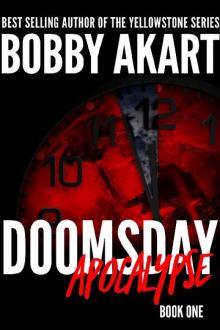 Doomsday Apocalypse
Doomsday Apocalypse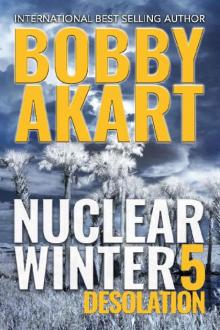 Nuclear Winter Desolation: Post Apocalyptic Survival Thriller (Nuclear Winter Series Book 5)
Nuclear Winter Desolation: Post Apocalyptic Survival Thriller (Nuclear Winter Series Book 5)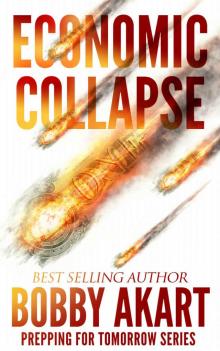 Economic Collapse (Prepping for Tomorrow Book 2)
Economic Collapse (Prepping for Tomorrow Book 2) Nuclear Winter Armageddon
Nuclear Winter Armageddon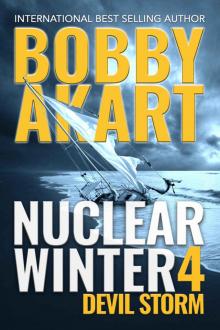 Nuclear Winter Devil Storm
Nuclear Winter Devil Storm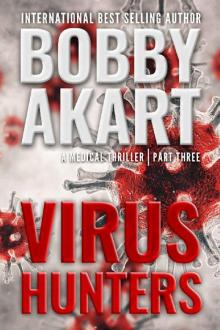 Virus Hunters 3: A Medical Thriller
Virus Hunters 3: A Medical Thriller Doomsday Civil War: A Post-Apocalyptic Survival Thriller (The Doomsday Series Book 5)
Doomsday Civil War: A Post-Apocalyptic Survival Thriller (The Doomsday Series Book 5) Asteroid Destruction
Asteroid Destruction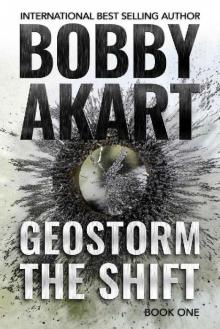 Geostorm the Shift
Geostorm the Shift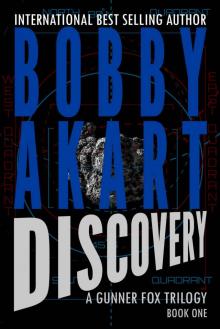 Asteroid Discovery
Asteroid Discovery Virus Hunters 2: A Medical Thriller
Virus Hunters 2: A Medical Thriller Geostorm The Shift: A Post-Apocalyptic EMP Survival Thriller (The Geostorm Series Book 1)
Geostorm The Shift: A Post-Apocalyptic EMP Survival Thriller (The Geostorm Series Book 1) Asteroid Diversion
Asteroid Diversion Nuclear Winter Devil Storm: Post Apocalyptic Survival Thriller (Nuclear Winter Series Book 4)
Nuclear Winter Devil Storm: Post Apocalyptic Survival Thriller (Nuclear Winter Series Book 4)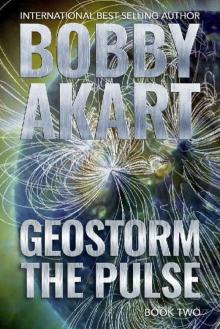 Geostorm The Pulse: A Post Apocalyptic EMP Survival Thriller (The Geostorm Series Book 2)
Geostorm The Pulse: A Post Apocalyptic EMP Survival Thriller (The Geostorm Series Book 2)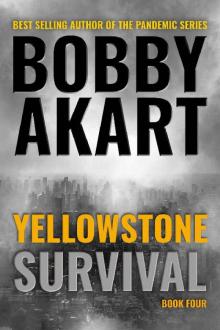 Yellowstone: Survival: A Post-Apocalyptic Survival Thriller (The Yellowstone Series Book 4)
Yellowstone: Survival: A Post-Apocalyptic Survival Thriller (The Yellowstone Series Book 4)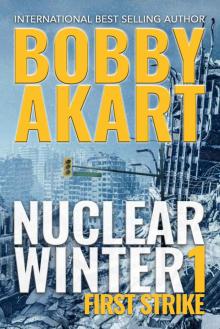 Nuclear Winter First Strike: Post-Apocalyptic Survival Thriller
Nuclear Winter First Strike: Post-Apocalyptic Survival Thriller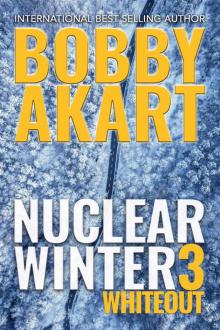 Nuclear Winter Whiteout
Nuclear Winter Whiteout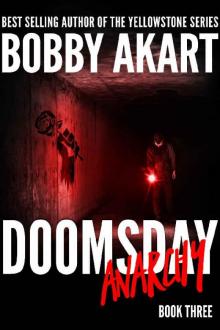 Doomsday Anarchy
Doomsday Anarchy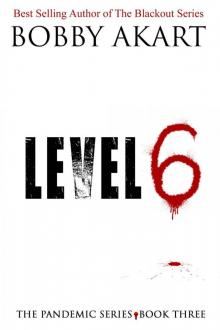 Pandemic: Level 6: A Post Apocalyptic Medical Thriller Fiction Series (The Pandemic Series Book 3)
Pandemic: Level 6: A Post Apocalyptic Medical Thriller Fiction Series (The Pandemic Series Book 3)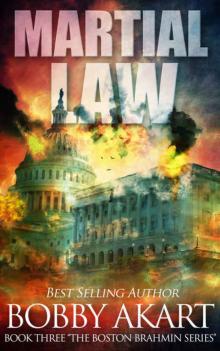 Martial Law
Martial Law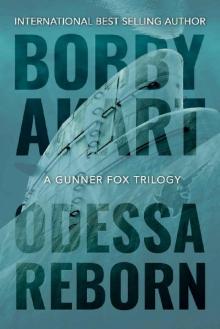 Odessa Reborn: A Terrorism Thriller (Gunner Fox Book 4)
Odessa Reborn: A Terrorism Thriller (Gunner Fox Book 4) New Madrid Earthquake
New Madrid Earthquake Beyond Borders: Post Apocalyptic EMP Survival Fiction (The Lone Star Series Book 2)
Beyond Borders: Post Apocalyptic EMP Survival Fiction (The Lone Star Series Book 2) The Blackout Series (Book 3): Turning Point
The Blackout Series (Book 3): Turning Point Patriot's Farewell: A Political Thriller Fiction Series (Boston Brahmin Political Thrillers Book 7)
Patriot's Farewell: A Political Thriller Fiction Series (Boston Brahmin Political Thrillers Book 7) Lines in the Sand_Post Apocalyptic EMP Survival Fiction
Lines in the Sand_Post Apocalyptic EMP Survival Fiction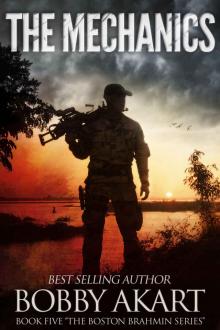 The Mechanics: A Post-Apocalyptic Fiction Series
The Mechanics: A Post-Apocalyptic Fiction Series The Loyal Nine
The Loyal Nine Axis of Evil
Axis of Evil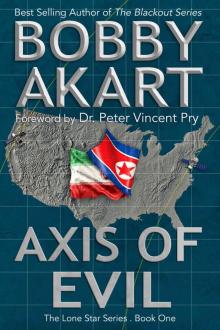 Axis of Evil: Post Apocalyptic EMP Survival Fiction (The Lone Star Series Book 1)
Axis of Evil: Post Apocalyptic EMP Survival Fiction (The Lone Star Series Book 1)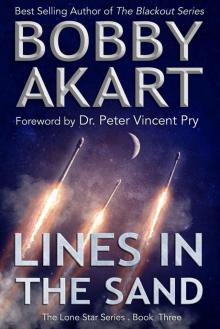 Lines in the Sand: Post Apocalyptic EMP Survival Fiction (The Lone Star Series Book 3)
Lines in the Sand: Post Apocalyptic EMP Survival Fiction (The Lone Star Series Book 3) Odessa Strikes
Odessa Strikes The Blackout Series (Book 4): Shiloh Ranch
The Blackout Series (Book 4): Shiloh Ranch Hornet's Nest: A Post Apocalyptic EMP Survival Fiction Series (The Blackout Series Book 5)
Hornet's Nest: A Post Apocalyptic EMP Survival Fiction Series (The Blackout Series Book 5) Yellowstone: Fallout: A Post-Apocalyptic Survival Thriller (The Yellowstone Series Book 3)
Yellowstone: Fallout: A Post-Apocalyptic Survival Thriller (The Yellowstone Series Book 3)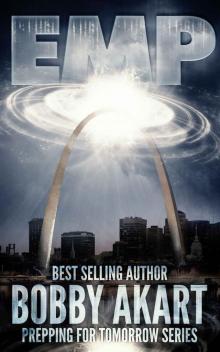 Electromagnetic Pulse
Electromagnetic Pulse Texas Strong: Post Apocalyptic EMP Survival Fiction (The Lone Star Series Book 4)
Texas Strong: Post Apocalyptic EMP Survival Fiction (The Lone Star Series Book 4)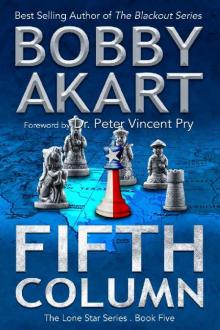 Fifth Column_Post Apocalyptic EMP Survival Fiction
Fifth Column_Post Apocalyptic EMP Survival Fiction Patriot's Farewell
Patriot's Farewell Texas Strong_Post Apocalyptic EMP Survival Fiction
Texas Strong_Post Apocalyptic EMP Survival Fiction Pandemic: The Innocents: A Post-Apocalyptic Medical Thriller Fiction Series (The Pandemic Series Book 2)
Pandemic: The Innocents: A Post-Apocalyptic Medical Thriller Fiction Series (The Pandemic Series Book 2) Shiloh Ranch: A Post Apocalyptic EMP Survival Fiction Series (The Blackout Series Book 4)
Shiloh Ranch: A Post Apocalyptic EMP Survival Fiction Series (The Blackout Series Book 4) Cyber Attack
Cyber Attack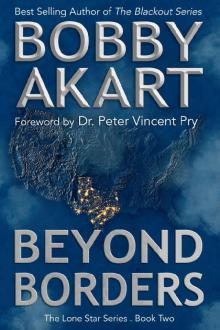 Beyond Borders
Beyond Borders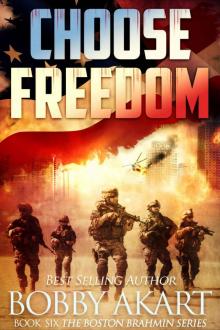 Choose Freedom: A Post-Apocalyptic Fiction Series (The Boston Brahmin Book 6)
Choose Freedom: A Post-Apocalyptic Fiction Series (The Boston Brahmin Book 6) False Flag
False Flag Turning Point: A Post Apocalyptic EMP Survival Fiction Series (The Blackout Series Book 3)
Turning Point: A Post Apocalyptic EMP Survival Fiction Series (The Blackout Series Book 3) Nuclear Winter First Strike
Nuclear Winter First Strike Pandemic: Beginnings: A Post-Apocalyptic Medical Thriller Fiction Series (The Pandemic Series Book 1)
Pandemic: Beginnings: A Post-Apocalyptic Medical Thriller Fiction Series (The Pandemic Series Book 1) Devil's Homecoming: A Post Apocalyptic EMP Survival Fiction Series (The Blackout Series Book 6)
Devil's Homecoming: A Post Apocalyptic EMP Survival Fiction Series (The Blackout Series Book 6) The Blackout Series (Book 6): Devil's Homecoming
The Blackout Series (Book 6): Devil's Homecoming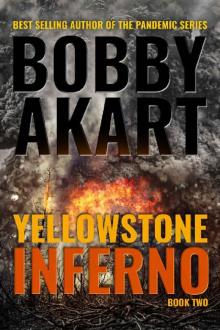 Yellowstone: Inferno: A Post-Apocalyptic Survival Thriller (The Yellowstone Series Book 2)
Yellowstone: Inferno: A Post-Apocalyptic Survival Thriller (The Yellowstone Series Book 2)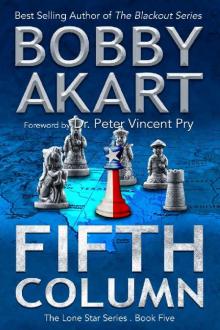 Fifth Column: Post Apocalyptic EMP Survival Fiction (The Lone Star Series Book 5)
Fifth Column: Post Apocalyptic EMP Survival Fiction (The Lone Star Series Book 5) Yellowstone: Hellfire: A Post-Apocalyptic Survival Thriller (The Yellowstone Series Book 1)
Yellowstone: Hellfire: A Post-Apocalyptic Survival Thriller (The Yellowstone Series Book 1) The Blackout Series (Book 2): Zero Hour
The Blackout Series (Book 2): Zero Hour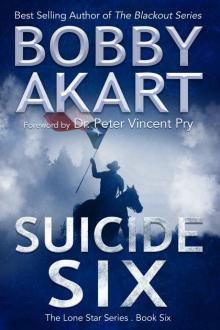 Suicide Six: Post Apocalyptic EMP Survival Fiction (The Lone Star Series Book 6)
Suicide Six: Post Apocalyptic EMP Survival Fiction (The Lone Star Series Book 6)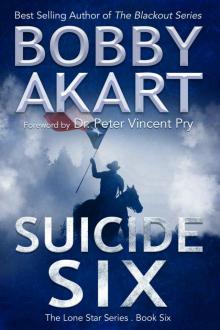 Suicide Six_Post Apocalyptic EMP Survival Fiction
Suicide Six_Post Apocalyptic EMP Survival Fiction Zero Hour: A Post-Apocalyptic EMP Survival Fiction Series (The Blackout Series Book 2)
Zero Hour: A Post-Apocalyptic EMP Survival Fiction Series (The Blackout Series Book 2) Beyond Borders_Post Apocalyptic EMP Survival Fiction
Beyond Borders_Post Apocalyptic EMP Survival Fiction Pandemic: Quietus: A Post-Apocalyptic Dystopian Fiction Series (The Pandemic Series Book 4)
Pandemic: Quietus: A Post-Apocalyptic Dystopian Fiction Series (The Pandemic Series Book 4) 36 Hours: A Post-Apocalyptic EMP Survival Fiction Series
36 Hours: A Post-Apocalyptic EMP Survival Fiction Series Cyber Warfare
Cyber Warfare